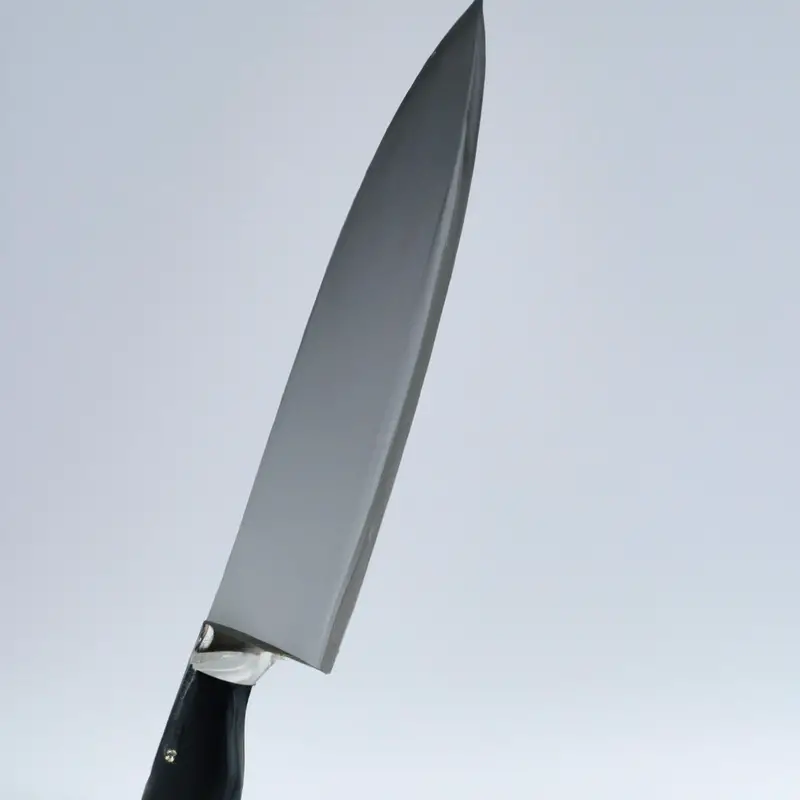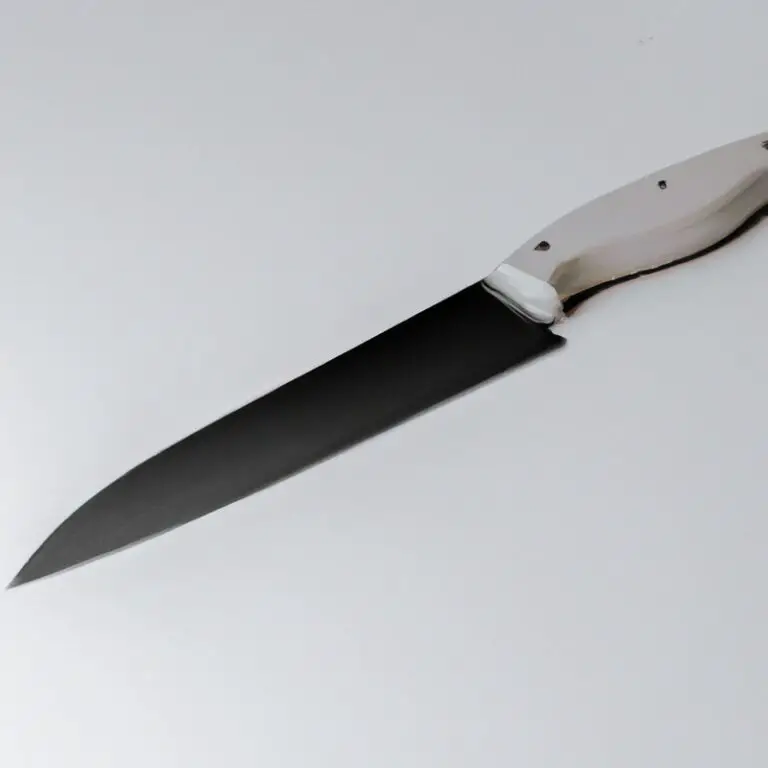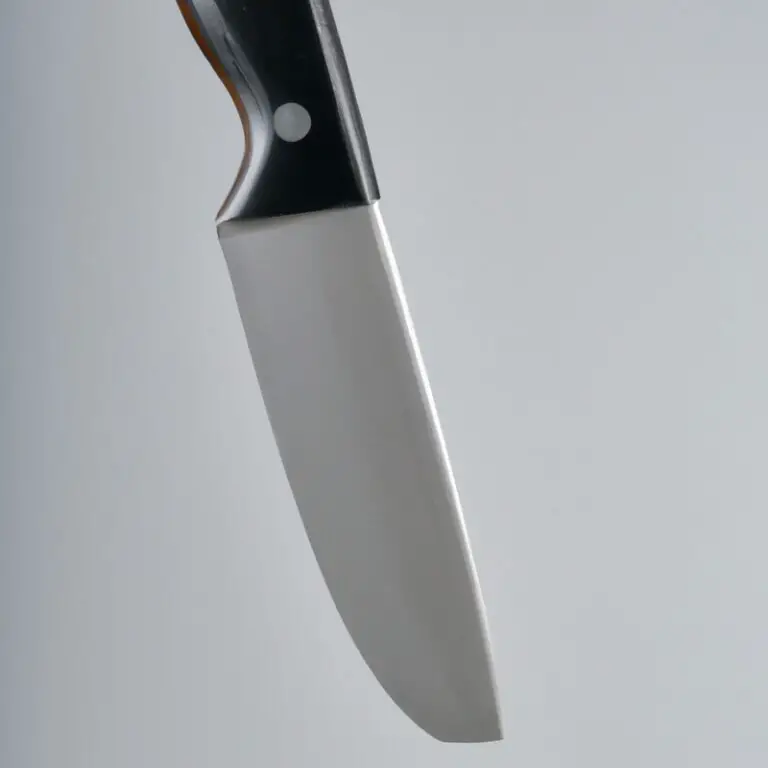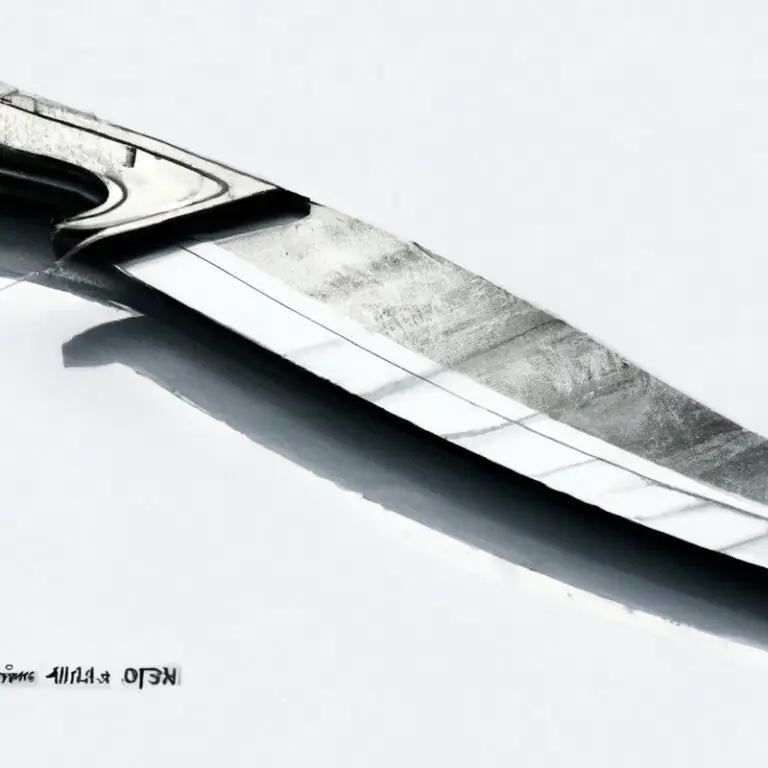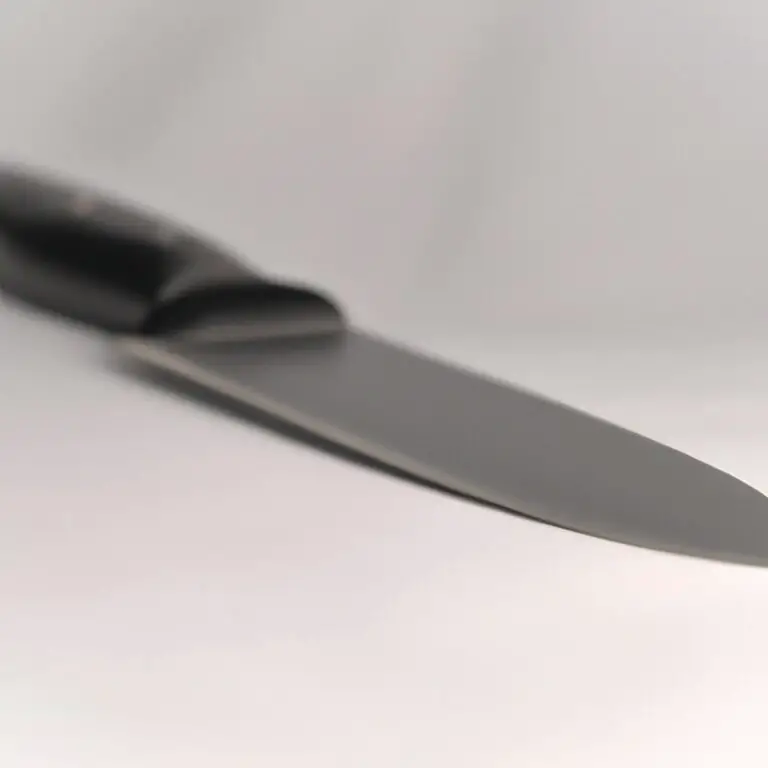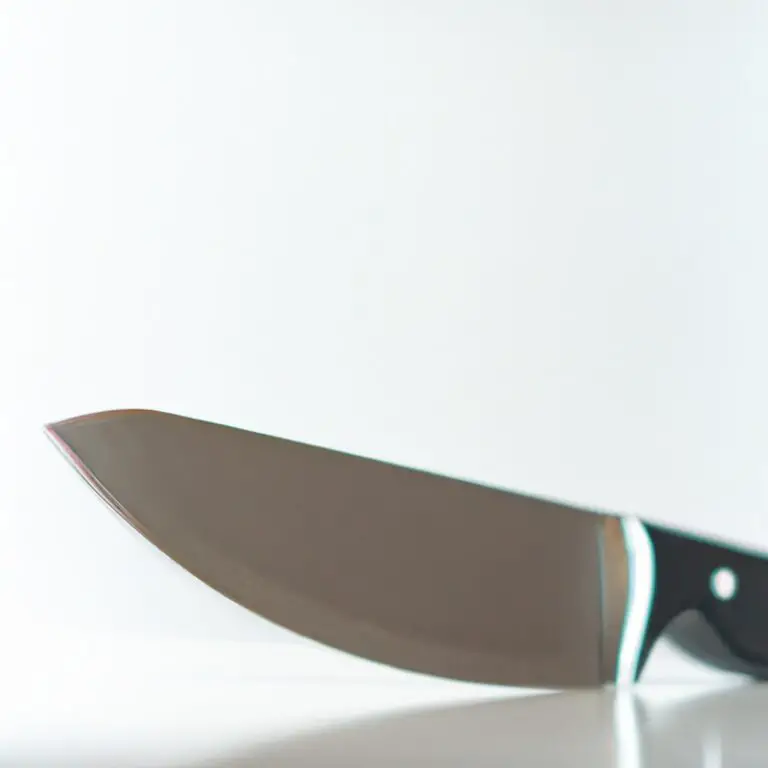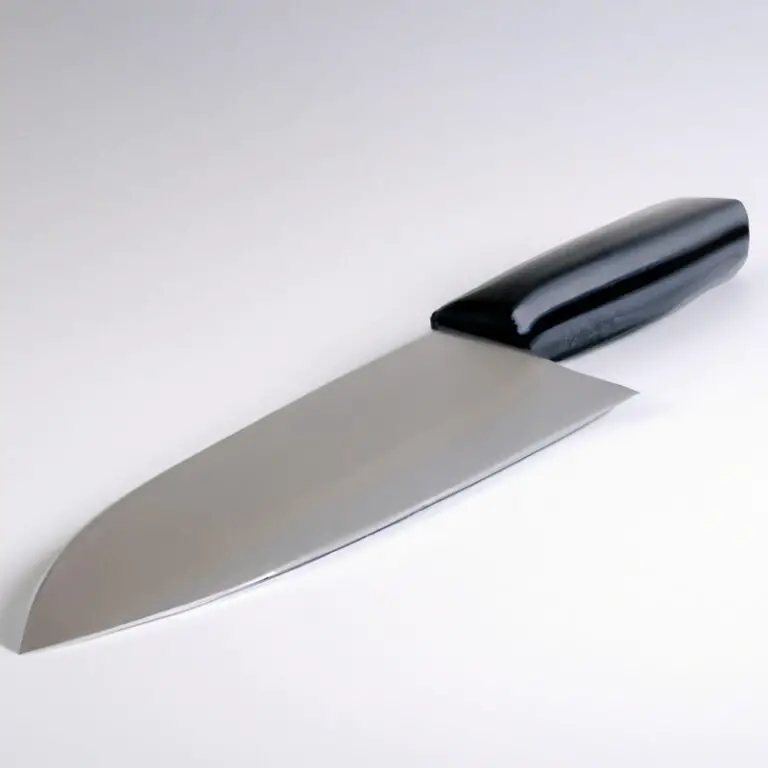How To Remove Tough Stains From a Chef Knife Like a Pro?
Key Takeaways:
- Use a food-safe abrasive powder to scrub away tough stains on your chef knife.
- Soak the knife in a solution of warm water and dish soap before wiping and rinsing it clean.
- Avoid using harsh chemicals or steel wool on your knife to prevent damage to its blade.
- Regularly clean and maintain your chef knife to prevent tough stains from building up in the first place.
Are you tired of seeing tough stains on your favorite chef knife? Whether it’s rust, food or mineral deposits, stains can be frustrating to remove.
But don’t worry! As a culinary expert, I’ve got you covered with some quick and easy solutions to make your chef knife look new again.
In this article, I’ll share tips on identifying the type and severity of stains, dos and don’ts of cleaning, using mild soap and warm water, using baking soda and vinegar, lemon juice and salt, specialized knife cleansers, maintaining regular cleaning and care, drying and storing properly, and even using a honing rod or sharpening stone. Say goodbye to tough stains on your chef knife and hello to a shiny, clean blade!
| Method | Ingredients/Tools | Instructions |
|---|---|---|
| Method 1: Baking Soda Paste | Baking soda, water, cloth/sponge | 1. Mix baking soda and water to create a paste. 2. Apply the paste to the stain and let it sit for 5-10 minutes. 3. Scrub the stain with a cloth or sponge. 4. Rinse the knife with water and dry it with a clean towel. |
| Method 2: Vinegar Soak | White vinegar, bowl, cloth/towel | 1. Fill a bowl with white vinegar. 2. Submerge the knife in the vinegar and let it soak for 5-10 minutes. 3. Use a cloth or towel to wipe off the stain. 4. Rinse the knife with water and dry it with a clean towel. |
| Method 3: Lemon Juice & Salt | Fresh lemon juice, salt, cloth/sponge | 1. Mix fresh lemon juice and salt to create a paste. 2. Apply the paste to the stain and let it sit for 5-10 minutes. 3. Scrub the stain with a cloth or sponge. 4. Rinse the knife with water and dry it with a clean towel. |
Identifying the type of stain and its severity on your chef knife for easy removal
Identifying the type of stain and its severity on your chef knife is crucial for easy removal. Common types of stains include rust, acidic, and organic stains.
Rust stains are brown or reddish-brown in color, while acidic stains are yellow or brown.
Organic stains, such as those from food or oil, are usually darker in color. The severity of the stain can also affect the removal process.
Light stains can be removed with mild soap and warm water, while tougher stains may require baking soda, vinegar, or lemon juice.
It’s important to avoid using abrasive materials, such as steel wool or harsh chemicals, as they can damage the knife’s surface. Specialized knife cleansers and polishes can be used for more stubborn stains.
Regular maintenance and cleaning can prevent tough stains from forming in the first place.
Dry and store your chef knife properly after cleaning to avoid further staining. Use lemon juice and baking soda to remove rust stains and regularly use a honing rod or sharpening stone to keep your knife stain-free and sharp.
The dos and don’ts of cleaning chef knives to prevent tough stains
Dos:
- Always hand wash your chef knife immediately after use with mild soap and warm water.
- Dry the knife completely with a towel and avoid air-drying, as this can lead to rust formation.
- Use a soft sponge or cloth to clean the knife and avoid abrasive cleaners, as these can scratch the surface of the blade.
- Store the knife in a knife block or on a magnetic strip to prevent damage or contact with other utensils.
- Regularly sharpen and hone the knife to maintain its sharpness and prevent it from dulling or becoming rusty.
Don’ts:
- Never put your chef knife in the dishwasher, as the high heat and harsh detergents can damage the blade and handle.
- Don’t soak the knife in water or leave it wet, as this promotes rust formation.
- Avoid using harsh chemical cleaners or bleach on the knife, as these can damage or corrode the blade.
- Never use a scouring pad or steel wool to clean the knife, as this can scratch or damage the blade.
- Don’t store the knife loose in a drawer, as it can rub against other utensils and become dull or scratched.
Using mild soap and warm water to remove stains from your chef knife
One effective way to remove stains from your chef knife is by using mild soap and warm water. First, rinse the knife with warm water to remove any surface dirt or debris.
Then, apply a small amount of mild soap onto the blade and gently rub it with a soft cloth or sponge.
Rinse the knife with warm water, making sure to remove all traces of soap. Dry the blade thoroughly with a clean towel to prevent water spots.
Avoid using abrasive sponges or harsh cleaning agents as they can scratch the surface of your knife.
This method works best for light to medium stains. For tougher stains, consider using baking soda or specialized knife cleansers and polishes.
Removing tough stains from your chef knife with baking soda and vinegar
To remove tough stains on a chef knife, use a paste of baking soda and water to scrub the affected area with a soft-bristled brush. Rinse the knife thoroughly and dry it with a clean towel.
Next, dip a cloth in vinegar and wipe the knife, making sure to cover the entire surface.
Rinse the knife with water and dry it again. Baking soda and vinegar work well in removing tough stains because of their abrasive and acidic properties, respectively.
Remember to handle these substances with care and avoid using them on knives with delicate finishes or handles made of wood or other porous materials.
How lemon juice and salt can help remove stubborn stains on your chef knife
Lemon juice and salt can act as an effective stain remover for stubborn stains on your chef knife. The citric acid in lemon juice reacts with the stains while the salt acts as an abrasive to remove them.
To use this method, simply sprinkle some salt on the affected area and squeeze some lemon juice over it.
Let it sit for a few minutes before rubbing the area gently with a sponge or cloth. Rinse the knife with water and dry it thoroughly.
However, it’s important to avoid using this method on knives with carbon steel blades as the acid in lemon juice can damage the blade.
This method is most effective on stainless steel blades. Overall, lemon juice and salt can be a cost-effective and natural solution for removing tough stains on your chef knife.
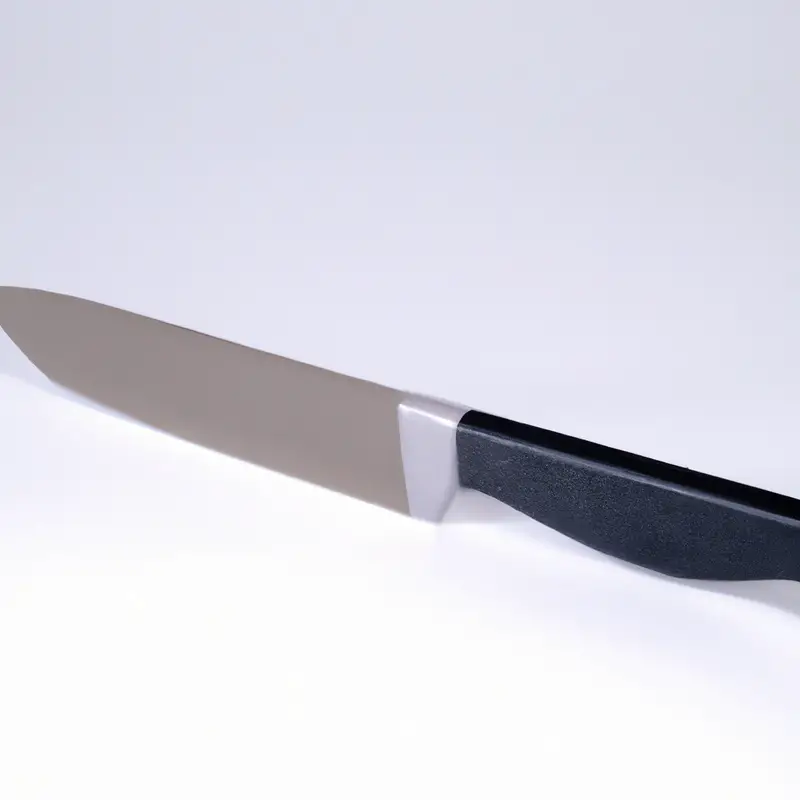
Removing stains from your chef knife using specialized knife cleansers and polishes
Specialized knife cleansers and polishes can be quite effective at removing tough stains from your chef knife. These products are specifically designed to clean and polish knives without damaging the blade’s surface.
Choose a cleanser or polish that is suitable for the type of stain on your knife and follow the manufacturer’s instructions carefully.
Some products are more abrasive than others and can harm the knife if not used correctly. Once you have applied the cleanser or polish to the knife, use a soft cloth or sponge to spread it evenly over the blade.
Gently rub the surface of the blade in circular motions, concentrating on the stained areas.
Avoid using too much pressure, especially if you’re dealing with scratches or other damage on the blade. After you have finished cleaning and polishing your knife, rinse it thoroughly with water and dry it with a clean cloth.
Store your knife in a dry and safe place to prevent future stains.
Using specialized knife cleansers and polishes can help maintain your chef knife’s longevity and keep it looking new for many years to come.
The importance of regular maintenance and cleaning to prevent tough stains on your chef knife
Regular maintenance and cleaning of your chef knife is crucial in preventing tough stains from forming. When left unattended, stains can become harder to remove and cause permanent damage to your knife’s blade.
By keeping your knife clean and dry after each use, you can reduce the likelihood of stains and extend the lifespan of your knife.
Use a mild soap and warm water to clean your knife thoroughly, making sure to dry it immediately afterward. Additionally, storing your knife in a dry and safe place can prevent rust and blade damage.
Finally, by regularly sharpening and honing your knife, you can keep it in top condition and prevent stains from building up.
Remember, prevention is key, and proper maintenance can save you time and money in the long run.
Drying and storing your chef knife properly after cleaning to avoid further stains
After cleaning the chef knife, it is crucial to dry it properly to avoid further stains. Leaving the knife to air dry invites the risk of rust and discoloration.
Instead, wipe it dry with a clean cloth immediately after rinsing.
Ensure that you dry the blade from the handle to the tip, paying attention to the handle’s nooks and crannies. If using a dishwasher, remove the knife immediately after the cycle ends and dry it by hand to keep the blade and handle from getting stained.
Storage is also essential to prevent rust and stains.
A knife block is an excellent option for storing knives. It keeps the knives organized and separated while preventing them from clashing with each other, which can dull the blade edge and cause stains.
Alternatively, a magnetic strip can be used to hang the knives.
Keep the knives away from moisture and humidity by avoiding storing them in damp areas, such as kitchen drawers or near a sink. With these simple steps, your Chef knife will remain clean, sharp, and ready to use.
How to remove rust stains from your chef knife with lemon juice and baking soda
To remove rust stains from your chef knife, mix lemon juice and baking soda to form a paste. Apply the mixture directly to the rust stains and let it sit for several minutes.
Scrub the rust stains with a soft-bristle brush, rinse the knife with cold water, and dry it thoroughly.
Lemon juice contains citric acid that breaks down rust, while baking soda acts as a mild abrasive that helps to lift off the rust stains. This method is safe and effective for removing rust stains from stainless steel and carbon steel chef knives.
Avoid leaving your knife wet and drying it promptly after each use to prevent rust from forming.
If your knife has deep rust stains that cannot be removed with this method, take it to a professional to restore it.
Using a honing rod or sharpening stone to keep your chef knife stain-free and sharp
To keep your chef knife stain-free and sharp, it is essential to regularly use a honing rod or sharpening stone. A honing rod helps to realign the edge of your blade, keeping it sharp, while a sharpening stone grinds away the dull parts of the knife.
When using a honing rod, hold it vertically and keep the blade at a 20-degree angle.
Run the blade down the rod, starting from the heel and moving towards the tip. Repeat this process 5-10 times on each side of the blade for optimal results.
Using a sharpening stone requires more skill and caution.
Begin with the coarsest side of the stone and run the blade along it at a 20-degree angle. Repeat the process on the other side of the blade.
Move on to the finer side of the stone and repeat the process until the blade is sharp.
Regular use of a honing rod or sharpening stone can extend the life of your chef knife and prevent tough stains. Be sure to clean and dry your knife after each use and store it in a safe, dry place.
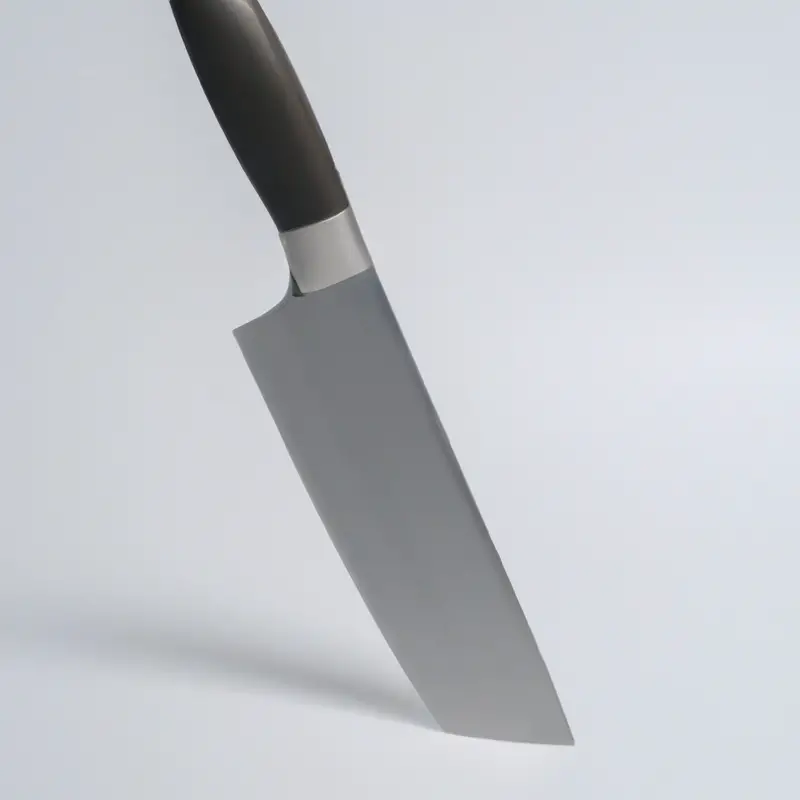
Final Verdict
Removing tough stains from your chef knife doesn’t have to be a daunting task. By identifying the type of stain, using the right cleaning techniques, and regular maintenance, you can keep your knife stain-free and sharp.
From mild soap and warm water to specialized knife cleansers and polishes, there are various solutions available to remove stubborn stains.
Remember to dry and store your knife properly after cleaning and use a honing rod or sharpening stone to keep it in top condition. With these practical tips, you can maintain the reliability and longevity of your chef knife and continue to create culinary masterpieces with confidence.
Trust us, your kitchen will thank you.

